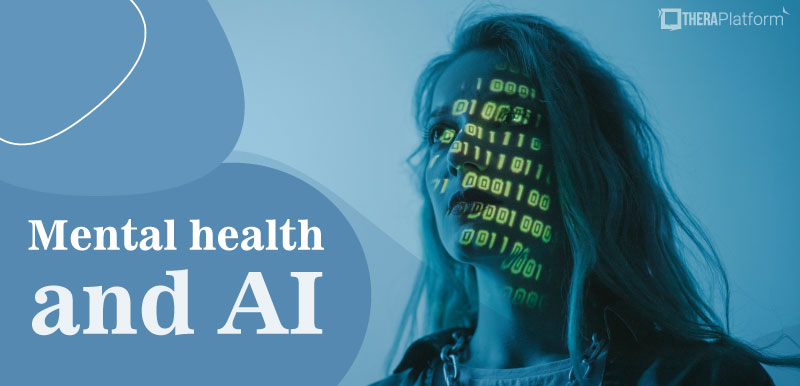Z codes in mental health therapy

In mental health care, understanding the complete picture of a client’s life is just as important as diagnosing their symptoms. While traditional diagnostic codes capture clinical conditions, they often fall short of addressing the broader psychosocial and environmental factors that influence mental health. This is where Z codes come in. Z codes are part of the ICD-10 coding system that documents these non-diagnostic factors, offering a more holistic view of a client’s challenges and needs.
- Unlike traditional diagnostic codes, Z codes document psychosocial and environmental factors influencing a client’s well-being, such as financial stress, relationship difficulties, or housing instability. This allows therapists to address root causes and develop more comprehensive treatment plans.
- Z codes help mental health providers share critical context with other professionals, including insurers and support services. They also guide treatment by identifying specific stressors, enabling therapists to tailor interventions to a client’s unique circumstances.
- While Z codes offer valuable insights, insurance reimbursement can be a challenge, as they are not always billable. Clinicians can pair them with primary diagnostic codes to ensure coverage and should communicate their purpose transparently to clients to avoid confusion or stigma. Enrolling in an insurance billing course for therapists can help providers enhance their knowledge.
- Using an EHR like TheraPlatform can help providers accurately document Z codes.
→ Click here to enroll in our free on-demand Insurance Billing for Therapists video course [Enroll Now]
Introduction to Z Codes
Definition
Z codes, officially known as Factors Influencing Health Status and Contact with Health Services, are a subset of codes within the ICD-10 (International Classification of Diseases, 10th Revision) system. Unlike traditional diagnostic codes, Z codes are used to document circumstances that impact a person’s health but aren’t classified as illnesses or injuries. These can include psychosocial stressors, environmental challenges, or lifestyle factors that affect well-being.
Purpose
- Provide context: Z codes bridge the gap between a client’s lived experiences and their clinical care, documenting factors that influence health but don’t fit into traditional diagnostic categories.
- Address the "why": While diagnoses like depression or anxiety identify clinical conditions, Z codes uncover the root causes of distress, such as unemployment, relationship strain, or unsafe living conditions.
- Enhance treatment plans: By documenting these underlying factors, Z codes ensure care addresses not just symptoms but the broader context of a client’s life.
When Z codes are useful
- Non-diagnosable challenges: Z codes are ideal for situations where a client’s struggles don’t meet criteria for a formal diagnosis but still impact well-being.
- Example: A young adult struggling with college adjustment (Z60.3: Acculturation difficulty) may benefit from counseling even without a diagnosable condition.
- Example: A client processing a recent divorce (Z63.4: Disruption of family by separation or divorce) may need support without qualifying for adjustment disorder.
- Preventive Care: Z codes allow early intervention for issues like burnout (Z73.0) before they escalate into more serious conditions.
Why Z codes matter
- Holistic care: They ensure psychosocial and environmental stressors aren’t overlooked, which is critical in mental health care.
- Improved communication: Z codes help share important context with other providers, insurers, and support services, fostering collaboration.
- Person-centered approach: They shift the focus from just diagnosing problems to understanding the whole person, promoting compassionate and comprehensive care.
Streamline your insurance billing with One EHR
- Claim batching
- Auto claims
- Automated EOB & ERA
- Real-time claim validation
- Real-time claim tracking
- Aging and other reports

Importance of Z codes for mental health
- Holistic understanding: Z codes help therapists see the full scope of a client’s life, going beyond symptoms and diagnoses to include environmental, relational, and circumstantial factors.
- Example: A client with depression may also face financial stress (Z59.5: Extreme poverty) or isolation (Z60.2: Problems related to living alone). Without addressing these factors, treatment may not lead to lasting improvement.
- Address root causes: Z codes allow therapists to tackle the underlying causes of distress, ensuring care is holistic and client-centered.
Key strengths of Z codes
- Highlight social determinants of Health: Z codes document factors like housing, employment, education, and social support that significantly impact mental well-being.
- Example: A client experiencing homelessness (Z59.0: Homelessness) may need housing resources and trauma support alongside therapy.
- Example: A client dealing with burnout (Z73.0: Burnout) might benefit from boundary-setting strategies or career counseling.
- Guides treatment planning: Z codes help identify specific stressors, enabling targeted interventions.
- Example: A client with relationship issues (Z63.0: Problems in relationship with spouse or partner) may benefit from couples therapy.
- Example: A client struggling with education (Z55.9: Problems related to education and literacy) might need study skills support or tutoring.
Watch this video to learn common insurance billing struggles and solutions
→ Start My Free Trial
→ Start My Free Trial
Promoting strengths and ethical documentation
- Strengths-based approach: Z codes not only document challenges but also highlight resilience.
- Example: A client who has overcome acculturation difficulties (Z60.3: Acculturation difficulty) or extreme poverty (Z59.5: Extreme poverty) may have developed valuable coping skills to build on in therapy.
- Ethical and transparent records: Z codes ensure all factors influencing a client’s health are documented, supporting high-quality care and accurate records.
- Example: Documenting homelessness (Z59.0: Homelessness) helps a social worker understand the client’s needs, facilitating collaboration and continuity of care.
Common Z codes used in mental health
Z codes cover a wide range of psychosocial and environmental factors. Here are some of the more commonly used Z codes in mental health practice.
Category | Z code | Circumstance | Description |
|---|---|---|---|
Psychosocial and Environmental Factors | Z60.2 | Problems related to living alone | Used for individuals who are experiencing difficulties due to isolation or lack of social support. |
Z60.3 | Applies to clients struggling to adapt to a new culture | Often seen in immigrant populations | |
Z59.0 | Homelessness | A significant stressor that can impact mental health, and this code helps document its role in a client’s situation. | |
Z59.5 | Extreme poverty | Financial hardship can exacerbate mental health challenges | |
Family and Relationship Issues | Z63.0 | Problems in relationship with spouse or partner | Used to document conflicts or difficulties in romantic relationships. |
Z63.4 | Disruption of family by separation or divorce | Family breakdowns are a common source of stress, and this code helps clinicians address their impact. | |
Educational and Occupational Concerns | Z55.9 | Problems related to education and literacy, unspecified | This code is used for clients facing challenges in their educational pursuits. |
Z56.0 | Unemployment | Job loss or difficulty finding work can be a major stressor, and this code helps document its role. | |
Other factors | Z72.9 | Problems related to lifestyle, unspecified | This broad code can be used to document lifestyle factors affecting health, such as poor diet or lack of exercise. |
Z73.0 | Burnout | Burnout, often related to work or caregiving, is increasingly recognized as a significant mental health concern. |
When to use Z Codes
Supplemental documentation
Z codes are frequently used alongside primary diagnostic codes to provide additional context, offering a more comprehensive understanding of a client’s situation.
For example, a client diagnosed with depression (F32.9) might also have a Z code for unemployment (Z56.0) to highlight a significant contributing factor. This combination helps clinicians and other healthcare providers recognize that the stress of job loss or financial instability may influence the client’s depression.
Similarly, a client with anxiety (F41.1) might have a Z code for problems related to their living situation (Z59.1: Inadequate housing), indicating that their housing conditions are a source of ongoing stress.
By pairing Z codes with primary diagnoses, therapists can ensure that treatment plans address not only the symptoms but also the underlying factors affecting the client’s mental health.
This approach is particularly valuable in multidisciplinary care settings, where different providers must clearly understand the client’s circumstances.
For instance, a psychiatrist prescribing medication for depression might benefit from knowing that the client is also dealing with extreme poverty (Z59.5), as this could influence treatment decisions or the need for additional support services. This way, Z codes serve as a bridge, connecting the clinical diagnosis to the client’s lived experiences.
Standalone use for Z codes
While Z codes are often used alongside primary diagnoses, they can also be used independently in certain situations. This is particularly relevant when a client is seeking care for psychosocial or environmental challenges that don’t meet the criteria for a formal mental health diagnosis.
For example, a client experiencing acculturation difficulties (Z60.3) after moving to a new country may not have a diagnosable mental health condition but could still benefit from counseling to navigate the challenges of adjusting to a new culture.
Similarly, a client dealing with the emotional impact of a recent divorce (Z63.4: Disruption of family by separation or divorce) might not qualify for a diagnosis of adjustment disorder but may still need support to process their feelings and rebuild their life.
Standalone Z codes are also useful for preventive care. For instance, a client who is feeling overwhelmed by work-related stress but doesn’t yet meet the criteria for an anxiety disorder might be coded with Z73.0: Burnout.
This allows the therapist to address the issue early, potentially preventing it from escalating into a more serious condition. In these cases, Z codes ensure that clients receive the care they need, even when their challenges don’t fit neatly into a diagnostic category.
Treatment planning
Z codes play a critical role in treatment planning by helping therapists identify specific stressors or challenges that may influence a client’s mental health.
For example, a client with a Z code for homelessness (Z59.0) might benefit from referrals to housing services and therapy. This dual approach ensures that the client’s immediate needs are met while also addressing the emotional impact of their situation.
Similarly, a client with a Z code for problems related to education (Z55.9) might need support developing study skills or accessing tutoring services, alongside therapy to address any resulting anxiety or self-esteem issues.
Z codes also help therapists tailor interventions to the client’s unique circumstances. For instance, a client dealing with relationship difficulties (Z63.0: Problems in relationship with spouse or partner) might benefit from couples therapy or communication skills training, while a client facing unemployment-related challenges (Z56.0) might need career counseling or assistance with job searching.
By incorporating Z codes into treatment plans, therapists can ensure that care addresses symptoms and empowers clients to overcome obstacles in their lives.
Additionally, Z codes can guide referrals to other professionals or community resources. For example, a client with a Z code for extreme poverty (Z59.5) might benefit from financial counseling or assistance programs, while a client struggling with acculturation difficulties (Z60.3) might be referred to cultural support groups or language classes. This collaborative approach ensures that clients receive comprehensive care that addresses all aspects of their well-being.
Documentation tips
Detailed descriptions
Providing clear, detailed descriptions of the client’s circumstances is essential when using Z codes.
For example, instead of simply noting “Z59.0: Homelessness,” include specifics such as how long the client has been without stable housing, the conditions they’re facing (e.g., living in a shelter or temporarily staying with friends), and how this situation is impacting their mental health.
Detailed documentation enriches the client’s record and helps other providers understand the full context of their challenges. For instance, noting that a client’s homelessness has led to increased anxiety and difficulty sleeping provides a clearer picture than the Z code alone.
Pairing codes
Pairing Z codes with primary diagnostic codes is another best practice. This approach creates a more comprehensive understanding of the client’s needs. For example, a client with anxiety (F41.1) who is also experiencing financial stress (Z59.5) would benefit from having both codes documented. This combination highlights how the client’s economic struggles are contributing to their anxiety, guiding more targeted and effective treatment.
Pairing codes also support insurance reimbursement, as primary diagnoses are typically required for billing, while Z codes provide valuable context.
Regular updates
Z codes should be reviewed and updated regularly to reflect changes in the client’s circumstances. Life situations can shift over time, and documentation should keep pace. For example, a client previously coded for unemployment (Z56.0) but has since found a job and may no longer need that Z code.
Regular updates ensure that treatment plans remain relevant and responsive to the client’s current needs, supporting ongoing progress and holistic care.
Common challenges and solutions
Insurance reimbursement
One of the most significant challenges with Z codes is that insurance companies may not always reimburse them. Unlike primary diagnostic codes tied to specific mental health conditions, Z codes address psychosocial and environmental factors influencing health.
While these factors are critical to understanding a client’s needs, insurers often view them as secondary or non-billable. For example, a Z code like Z59.0 (Homelessness) or Z60.3 (Acculturation difficulty) might not be reimbursed on its own because it doesn’t represent a diagnosable medical condition.
To navigate this challenge, clinicians can pair Z codes with reimbursable primary diagnostic codes.
For instance, if a client is experiencing depression (F32.9) due to the stress of unemployment (Z56.0), the therapist can bill for the depression diagnosis while using the Z code to provide context.
This approach ensures that the client’s care is documented comprehensively while meeting insurance requirements. Clear and detailed documentation is also key. By explaining how the Z code relates to the client’s treatment plan—such as noting that homelessness (Z59.0) is contributing to their anxiety—therapists can justify the use of Z codes and demonstrate their clinical relevance.
It’s also worth noting that some insurers are beginning to recognize the importance of addressing social determinants of health, which may lead to broader acceptance of Z codes in the future. In the meantime, therapists can advocate for their clients by staying informed about payer policies and using Z codes strategically to support holistic care.
Client understanding
Another challenge with Z codes is ensuring clients understand their purpose and don’t feel stigmatized or misunderstood. For example, clients might feel uneasy seeing a Z code like Z59.5 (Extreme poverty) or Z63.4 (Disruption of family by separation or divorce) in their records, especially if they don’t fully grasp why it’s being used.
To avoid misunderstandings, therapists should take the time to explain Z codes clearly and empathetically.
When introducing Z codes, therapists can frame them as tools for providing better care. For instance, they might say, “This code helps us document the stress you’re experiencing due to your living situation so we can better support you.”
This explanation emphasizes that Z codes are not labels or judgments but rather a way to capture the full picture of a client’s life. It’s also helpful to reassure clients that Z codes guide treatment and connect them with resources, not to define them or their experiences.
Sometimes, clients may worry about how Z codes will be used or shared. Therapists can address these concerns by explaining the confidentiality of their records and how Z codes are used solely to improve their care.
For example, a therapist might say, “This code is just for our records and helps me understand what’s going on in your life so we can work on the best plan together.” By fostering open communication and transparency, therapists can help clients feel more comfortable using Z codes and reinforce the collaborative nature of the therapeutic relationship.
Z codes are a powerful tool for enhancing mental health care. They provide a way to document the psychosocial and environmental factors that influence well-being, offering a more complete picture of a client’s challenges.
By using Z codes, therapists can develop more effective treatment plans, advocate for their clients’ needs, and promote holistic care. While there are challenges, such as insurance reimbursement and client communication, the benefits far outweigh the drawbacks.
As mental health professionals, it’s our responsibility to use every tool at our disposal to support our clients—and Z codes are an essential part of that toolkit.
How EHR and practice management software can save you time with insurance billing for therapists
EHRs with integrated billing software and clearing houses, such as TheraPlatform, offer therapists significant advantages in creating an efficient insurance billing process. The key is minimizing the amount of time dedicated to developing, sending, and tracking medical claims through features such as automation and batching.
What are automation and batching?
- Automation refers to setting up software to perform tasks with limited human interaction.
- Batching or performing administrative tasks in blocks of time at once allows you to perform a task from a single entry point with less clicking.
Which billing and medical claim tasks can be automated and batched through billing software?
- Invoices: Create multiple invoices for multiple clients with a click or two of a button or set up auto-invoice creation, and the software will automatically create invoices for you at the preferred time. You can even have the system automatically send invoices to your clients.
- Credit card processing: Charge multiple clients with a click of a button or set up auto credit card billing, and the billing software will automatically charge the card (easier than swiping!)
- Email payment reminders: Never manually send another reminder email for payment again, or skip this altogether by enabling auto credit card charges.
- Automated claim creation and submission: Batch multiple claims with one button click or turn auto claim creation and submission on.
- Live claim validation: The system reviews each claim to catch any human errors before submission, saving you time and reducing rejected claims.
- Automated payment posting: Streamline posting procedures for paid medical claims with ERA. When insurance offers ERA, all their payments will post automatically on TheraPlatform's EHR.
- Tracking: Track payment and profits, including aging invoices, overdue invoices, transactions, billed services, service providers.
Utilizing billing software integrated with an EHR and practice management software can make storing and sharing billing and insurance easy and save providers time when it comes to insurance billing for therapists.
Practice Management + EHR + Telehealth
Mange more in less time in your practice with TheraPlatform

Resources
Theraplatform is an all-in-one EHR, practice management and teletherapy solution that allows you to focus more on patient care. With a 30-day free trial, you have the opportunity to experience Theraplatform for yourself with no credit card required. Cancel anytime. They also support different industries including mental and behavioral health therapists in group practices and solo practices.
More resources
- Therapy resources and worksheets
- Therapy private practice courses
- Ultimate teletherapy ebook
- The Ultimate Insurance Billing Guide for Therapists
- The Ultimate Guide to Starting a Private Therapy Practice
- Mental health credentialing
- Insurance billing 101
- Practice management tools
- Behavioral Health tools
Free video classes
- Free on-demand insurance billing for therapist course
- Free mini video lessons to enhance your private practice
- 9 Admin tasks to automate in your private practice
References
World Health Organization. ICD-11: International Classification of Diseases, 10th Revision. https://icd.who.int/en
American Psychiatric Association. (2013). Diagnostic and Statistical Manual of Mental Disorders (DSM-5).
Centers for Medicare & Medicaid Services. (2021). ICD-10-CM Official Guidelines for Coding and Reporting. https://www.cms.gov/medicare/coding-billing/icd-10-codes
National Alliance on Mental Illness (NAMI). (2020). Mental Health by the Numbers. https://www.nami.org/about-mental-illness/mental-health-by-the-numbers



